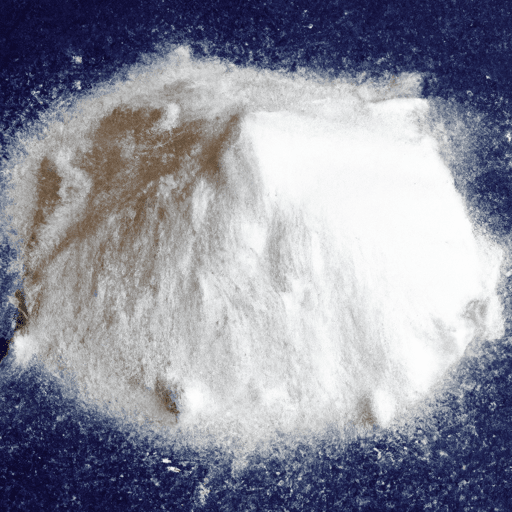Sodium Bicarbonate: Exploring the Magic of Baking Soda in the Kitchen
Sodium bicarbonate, commonly known as baking soda, is a versatile ingredient that has found its way into almost every home kitchen. Its many uses range from culinary applications to cleaning and even personal care. In this blog post, we will dive into the world of sodium bicarbonate and uncover its taste, common uses in cooking, nutritional value, and some interesting historical facts.
The Taste and Texture of Sodium Bicarbonate
In its raw form, sodium bicarbonate is a fine white powder with a slightly salty and alkaline taste. When dissolved in water or combined with acids, it releases carbon dioxide gas, which creates bubbles and imparts a light, airy texture to baked goods. This reaction is what makes sodium bicarbonate an essential component of many recipes, especially those requiring leavening.
Common Uses in Cooking
1. Leavening Agent
As mentioned earlier, sodium bicarbonate is commonly used as a leavening agent in baking. When mixed with an acid (such as cream of tartar, lemon juice, or buttermilk) and moisture, it produces carbon dioxide gas, causing the batter or dough to rise. This is particularly important in recipes like cakes, cookies, and muffins, providing them with a fluffy and light structure.
2. Tenderizing Meat
Another fantastic culinary application of sodium bicarbonate is its ability to tenderize meat. By sprinkling a small amount of baking soda on tougher cuts of meat and allowing it to rest for a while, the baking soda alters the pH level and breaks down proteins, resulting in more tender and succulent meat when cooked.
3. Cleaning Fruits and Vegetables
Sodium bicarbonate can be used as a natural and affordable way to clean fruits and vegetables. Simply make a solution with a tablespoon of baking soda and a cup of water, then soak your produce in this mixture. It helps remove dirt, wax, and pesticide residue, leaving you with fresh and clean produce.
Nutritional Value
While sodium bicarbonate is not a significant source of nutrients, it contributes minimal amounts of sodium to our diets. One teaspoon of baking soda contains approximately 1,000 milligrams of sodium. Therefore, individuals on low-sodium diets should use sodium bicarbonate sparingly and consider alternative leavening agents when possible.
Fascinating History and Fun Facts
Sodium bicarbonate has a rich history that goes back thousands of years. Ancient Egyptians used a primitive form of sodium bicarbonate as soap, and the natural deposits of soda ash found in ancient Egypt and Persia were used for cleaning and cooking. It wasn’t until the 18th century that sodium bicarbonate was isolated and identified as a distinct compound.
Here are a few fascinating fun facts about sodium bicarbonate:
- Sodium bicarbonate mixed with water and vinegar can be used to create a homemade volcano for science experiments with kids.
- It can also be used as a fire extinguisher for small grease and electrical fires, due to its ability to release carbon dioxide and smother the flames.
- Sodium bicarbonate can act as a natural deodorant when used on the skin, as it helps neutralize odors.
Sodium bicarbonate truly is a versatile and economical ingredient that has become a staple in kitchens worldwide. From its ability to make cakes rise to its practical uses in cleaning, it continues to amaze us with its many applications. However, it is essential to use it in moderation and be mindful of its sodium content, particularly for individuals with specific dietary needs.
Next time you’re baking or preparing a meal, remember the magic that sodium bicarbonate brings to the table.
Sodium Bicarbonate
- Sodium bicarbonate, also known as baking soda, has been used for centuries for various purposes.
- It is a white, crystalline powder with a slightly salty taste.
- Sodium bicarbonate has a chemical formula of NaHCO₃ and is composed of sodium (Na⁺) ions, bicarbonate (HCO₃⁻) ions, and water (H₂O) molecules.
- The origin of sodium bicarbonate can be traced back to ancient Egypt, where it was used as a cleaning agent and in the preparation of mummies.
- Today, sodium bicarbonate is produced through a chemical reaction involving sodium carbonate (Na₂CO₃) and carbon dioxide (CO₂).
- Sodium bicarbonate is a versatile substance and has a wide range of common uses. It is most commonly used in cooking and baking as a leavening agent, helping doughs and batters rise when combined with acidic ingredients.
- It is also used as an ingredient in some toothpaste and mouthwash formulations due to its ability to neutralize odors and promote oral health.
- Sodium bicarbonate is a common household cleaning agent and can be used to remove stains, deodorize, and unclog drains.
- In medical contexts, sodium bicarbonate can be administered intravenously to treat certain acid-base imbalances and as an antacid to relieve heartburn and indigestion symptoms.
- From a nutritional standpoint, sodium bicarbonate is low in calories and does not contain any significant nutrients or vitamins.
- However, it is worth noting that excessive consumption of sodium bicarbonate can lead to sodium intake surpassing recommended levels and potential health issues for individuals with certain medical conditions.
- Sodium bicarbonate has unique properties, including its ability to act as a buffer, helping to maintain the pH balance of solutions in various applications.
- Throughout history, sodium bicarbonate has been an essential ingredient for many cultural and traditional recipes, such as biscuits, cakes, and cookies.
- It is worth mentioning that sodium bicarbonate can also be used as a cleaning and deodorizing agent for household items like cutting boards, refrigerators, and dishwashers.




Use the share button below if you liked it.
It makes me smile, when I see it.